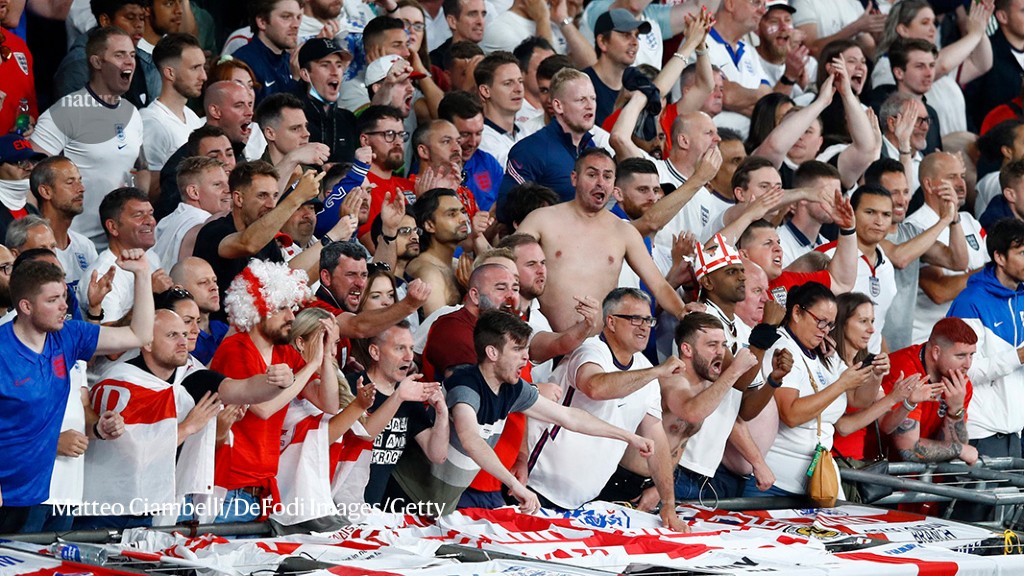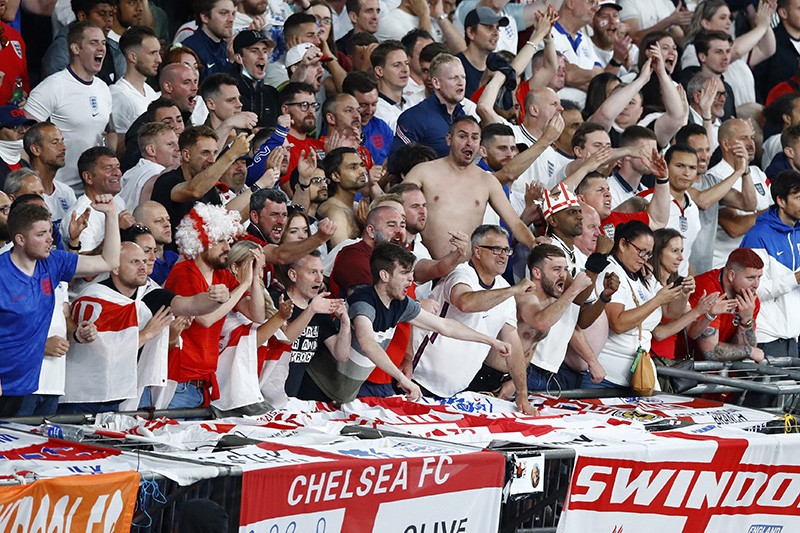As the postponed 2020 Summer Olympics begin in Tokyo, one aspect will stand in stark contrast with other recent major sport events, such as the UEFA EURO 2020 football championship final on 11 July. While olympians will be performing without live audiences, the Euro final at London’s Wembley Stadium saw 60,000 fans chanting on the bleachers.
Spectators at Wembley were consenting participants in an experiment by the UK government to track the spread of COVID-19, as part of the Events Research Programme, an initiative which also included certain concerts, summer festivals and other mass events. Some countries have started similar, though smaller-scale, studies.
Earlier this month, the government unveiled the results of the first phase of the UK programme — involving events between April and May 2021, but not the later events including the Euro 2020 final. Although some useful information did come out, the test events so far have not yet provided conclusive data on the spread of SARS-CoV-2 at events. Researchers also flag that the government did not wait for more conclusive results from the later events to inform its policy and lifted most pandemic restrictions across England just this week.
Theresa Marteau, a behavioural scientist at the University of Cambridge, UK, and chair of the science board, says that working at speed with event organizers meant that opportunities were missed. “Sometimes the tickets were being sold at the time when the [science] protocols were being finalised,” she says.
When the United Kingdom launched the Events Research Programme in February, the government said it would allow spectators who could provide proof of a recent negative COVID-19 test to attend gigs and mass sports events at limited capacity. Subsequent studies would yield crucial data on how to safely run these events and would guide policy decisions on reopening entertainment venues in ways that reduce transmission risks.
But the low infection rates among the population when the first events kicked off, and poor participation in PCR testing among attendees before and after events, meant the collected data lacked the scale and scope to give answers, the authors of the report say.
Case numbers for those who attended the nine events included in the first phase of the Events Research Programme between April and May 2021 were small. Just 28 of the more than 55,000 people who took part as spectators at events — including the World Snooker Championship at a Sheffield theatre, the Football Association cup final at Wembley Stadium and the BRIT Awards at the O2 Arena in London — tested positive for SARS-CoV-2. Of these, researchers identified 11 who might have been infectious at an event and a further 17 as potentially infected at or around the time of an event, according to the findings, published on 1 July.
The report’s authors urge these figures to be interpreted with “extreme caution” because the virus was not circulating widely in the community at the time and only 15% of those required to return pre- and post-event PCR tests did so.
John Edmunds, an epidemiologist at the London School of Hygiene & Tropical Medicine and a member of the Events Research Programme’s science board, adds that the highly infectious delta variant was not yet predominant in the United Kingdom. “We knew that we wouldn’t have enough cases to look at transmission,” says Edmunds.
The researchers looked at proxies for potential transmission of the virus at the events. These included environmental factors for airborne transmission — such as carbon-dioxide levels, which reveals poor ventilation, and crowd density — and behavioural factors, such as compliance with rules on face coverings and social distancing.
The results suggest that different locations at a venue have different risk factors for transmission. Outdoor spaces had generally fewer risk factors than did indoor ones, for example, and certain areas of outdoor venues, such as the toilets, corridors and food and drink stands, where people crowded together, posed higher risks.
“Sitting in your seat at Wembley is likely low risk,” says Edmunds. It’s the pinch points at the venue and the things that happen around the event, such as using public transport or visiting the pub, that are likely to be higher risk, he says.
For Marteau, these findings were worthwhile. The programme has been “extraordinary” for both the scale of the experiments and the speed with which they were set up. “There are limitations, but in the main it is better that it happened than not,” she says.
Both Marteau and Edmunds suggest that the rate of PCR compliance could have been improved if incentives and better communication for event-goers were in place.
The Netherlands has also invested in a research programme to help understand how to hold business, culture and sports events safely. The FieldLab Events programme promised to develop proof of a reliable and safe approach to opening up entertainment. But earlier this month, the Dutch government — which on 26 June had had lifted most COVID–19 restrictions, including on mass gatherings — reversed that decision after infection rates spiked 500%.
Back in the United Kingdom, with the events in the second and third phases of the programme, including the Euro 2020 final, now completed but not yet analysed, Edmunds and colleagues are hoping that these data combined with a new approach to tracking case counts that does not rely on pre- and post-event tests will shed more light on the risks of transmission at large events.
But the results will come too late to inform policy. Restrictions on the number of people who can gather indoors and mandates on social distancing were lifted in England — although not in other parts of the United Kingdom — on 19 July, leading to frustrations among some scientists involved in the research, who worry that people now think it is safe to attend large gatherings.





More News
US funders to tighten oversight of controversial ‘gain-of-function’ research
Bird flu in US cows: where will it end?
Daily briefing: Why exercise is good for us